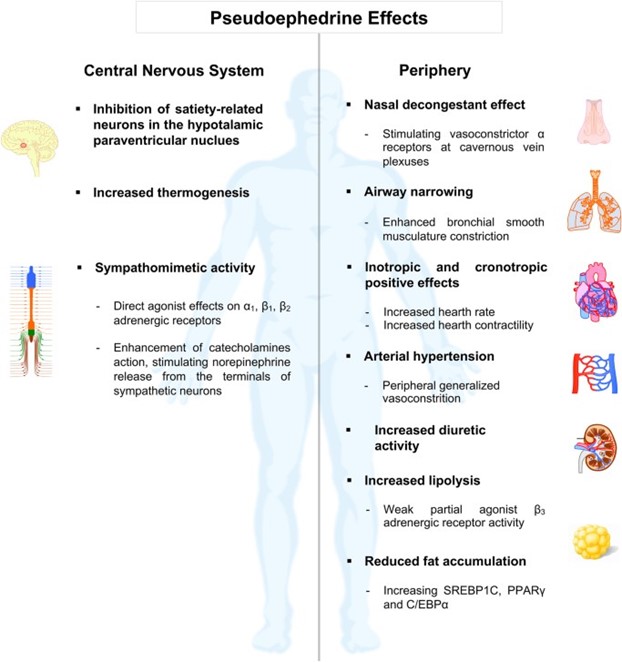A nurse is reviewing the medical record of a client who reports taking pseudoephedrine for sinus congestion as needed. The nurse should identify that pseudoephedrine is contraindicated for which of the following client conditions?
Migraines
Eczema
Hypertension
Diverticulitis
The Correct Answer is C
Pseudoephedrine is a sympathomimetic medication that acts as a decongestant by constricting blood vessels in the nasal passages, which helps to relieve sinus congestion. However, it can also cause vasoconstriction in other parts of the body, leading to an increase in blood pressure. Therefore, it is contraindicated for individuals with hypertension (high blood pressure).

The other conditions mentioned, migraines, eczema, and diverticulitis, are not contraindications for the use of pseudoephedrine. However, it is important for individuals with these conditions to consult their healthcare provider before taking pseudoephedrine, as it may interact with other medications or exacerbate certain symptoms.
Nursing Test Bank
Naxlex Comprehensive Predictor Exams
Related Questions
Correct Answer is B
Explanation
A. Administering the granules mixed with 20 oz of water is not necessary. Montelukast granules can be administered directly into the mouth or mixed with a small amount of soft food (e.g., applesauce) if necessary. The specific instructions for administration should be provided by the healthcare provider or included in the product labeling.
B.If you’re using it to prevent breathing problems related to exercise, take a single dose at least 2 hours before exercising. However, another dose cannot be taken within 24 hours.
C.Montelukast is a leukotriene receptor antagonist commonly used for the maintenance treatment of asthma in children and adults. The usual recommended dose is once daily in the evening, depending on the specific instructions from the healthcare provider.
D. Administering the medication at the onset of wheezing is not the recommended approach. Montelukast is a daily maintenance medication for asthma and should be taken regularly as prescribed, regardless of wheezing symptoms. It is not intended to be used for immediate relief of wheezing or acute asthma symptoms. Short-acting bronchodilators are typically used for quick relief of wheezing or acute asthma symptoms.
Correct Answer is A
Explanation
Expectorants are medications that help thin and loosen mucus in the respiratory tract, making it easier to cough up and clear from the airways. Increasing fluid intake, particularly water helps to keep the mucus thin and less sticky, facilitating its removal. Adequate hydration can help promote effective expectoration and relieve congestion.
The other options are incorrect because:
B. Taking the medication once a day only, usually at bedtime: The dosing frequency and timing of expectorants can vary depending on the specific medication prescribed. It is important to follow the healthcare provider's instructions regarding the dosing schedule.
C. Increase fiber and fluid intake to prevent constipation: This instruction is unrelated to expectorant use. Increasing fiber and fluid intake is commonly recommended to promote regular bowel movements and prevent constipation, but it is not directly related to expectorant therapy.
D. Restrict fluids to decrease mucus production: Restricting fluids can lead to dehydration and thickening of mucus secretions. It is important to stay adequately hydrated to maintain thin and easily expectorated mucus. Restricting fluids is not recommended for managing mucus production.
Whether you are a student looking to ace your exams or a practicing nurse seeking to enhance your expertise , our nursing education contents will empower you with the confidence and competence to make a difference in the lives of patients and become a respected leader in the healthcare field.
Visit Naxlex, invest in your future and unlock endless possibilities with our unparalleled nursing education contents today
Report Wrong Answer on the Current Question
Do you disagree with the answer? If yes, what is your expected answer? Explain.
Kindly be descriptive with the issue you are facing.
